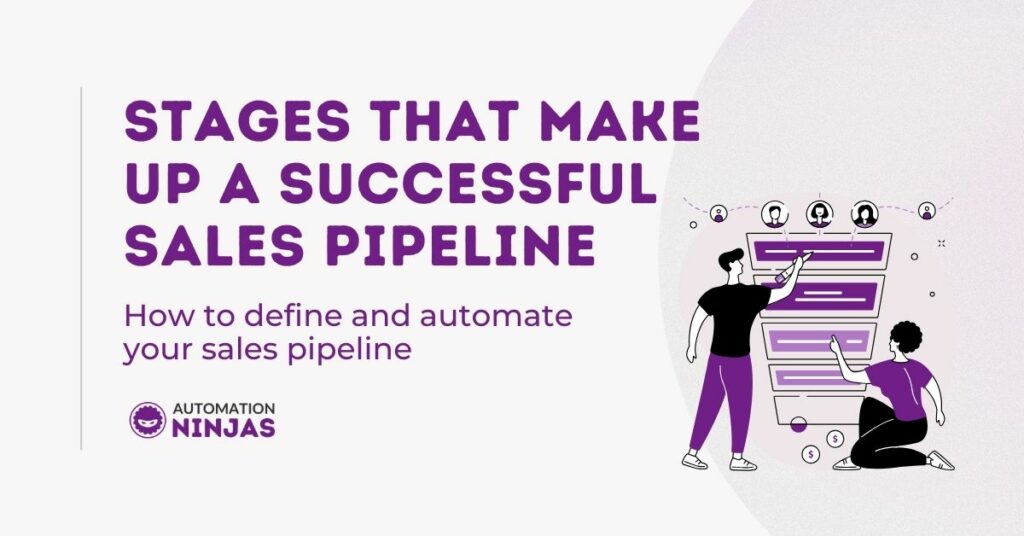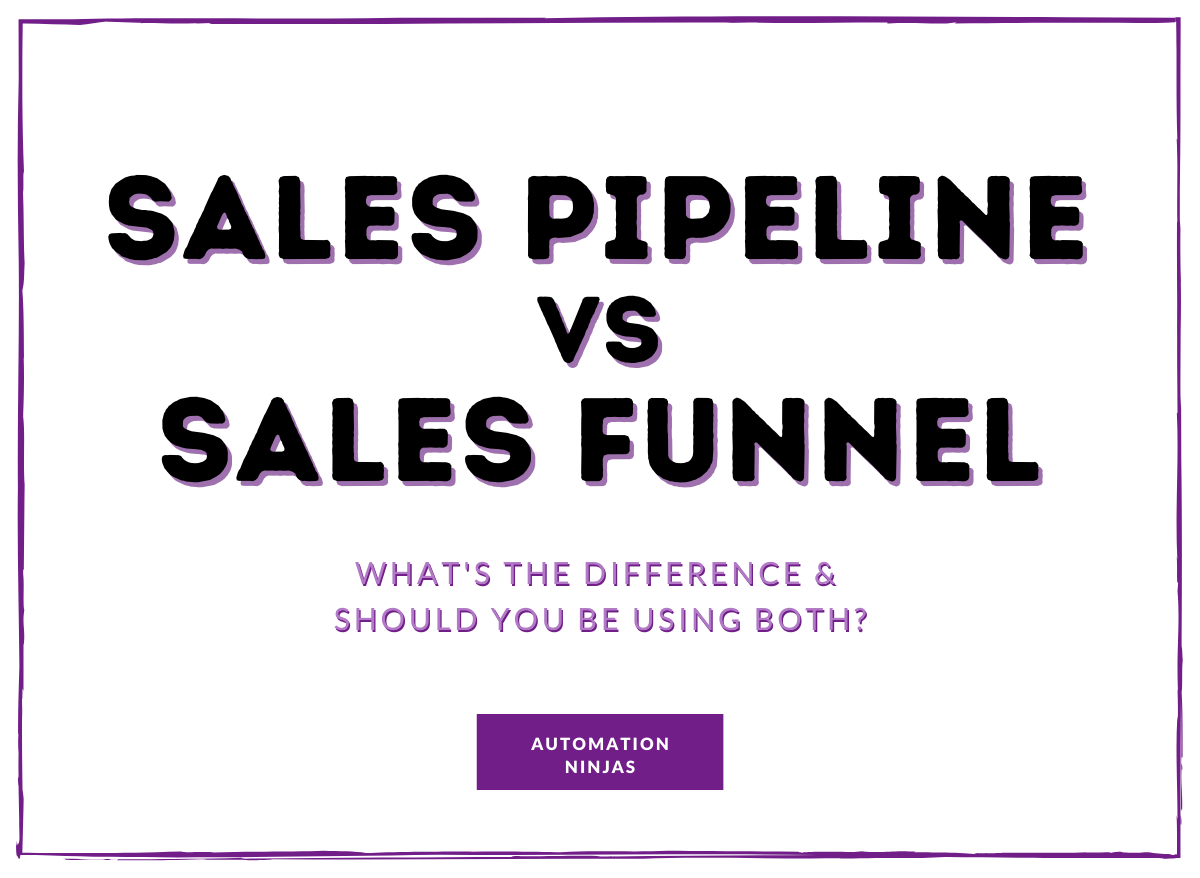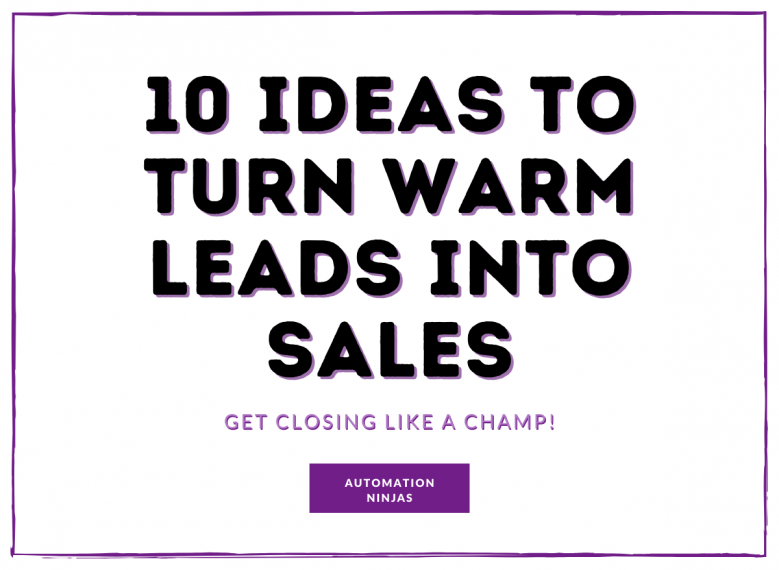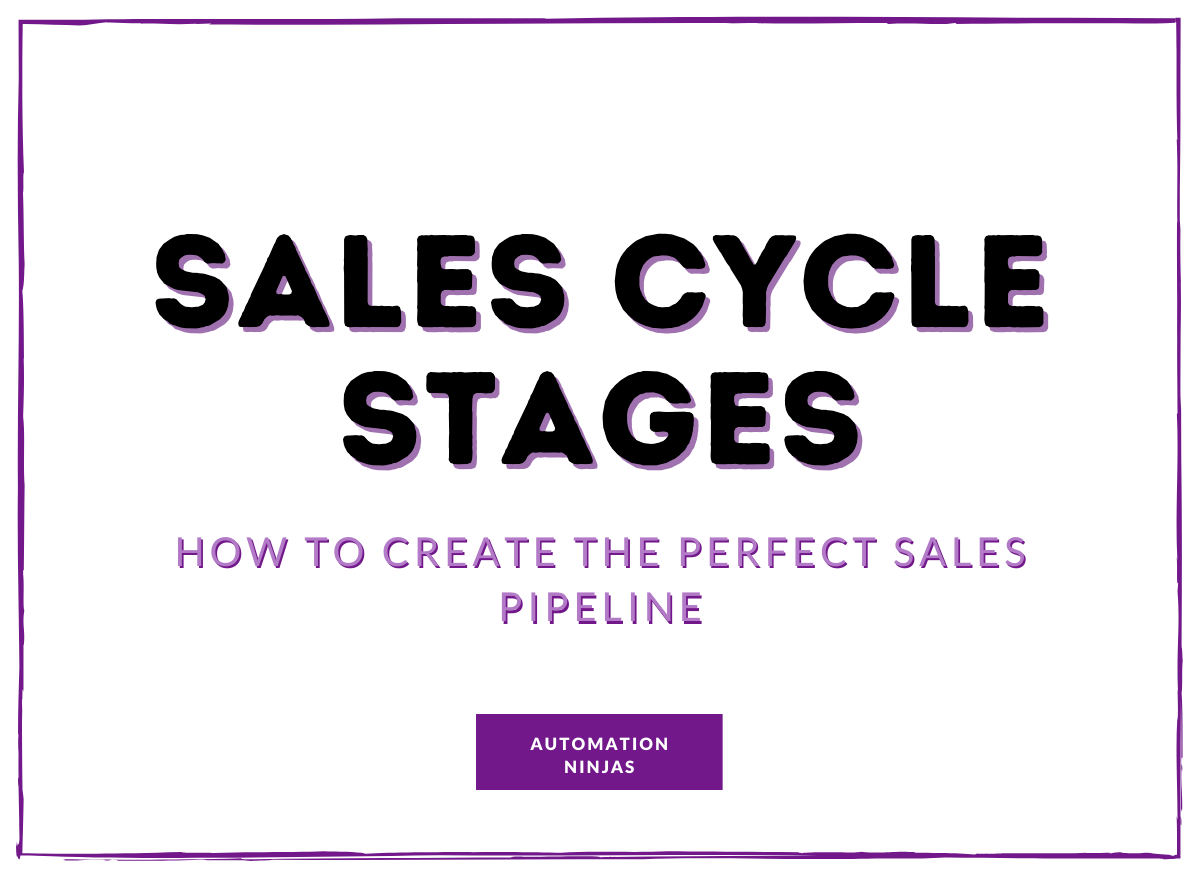What is a Sales Pipeline?
It is a step-by-step process in which your business establishes a series of connections with potential customers to create new business opportunities.
This process can be broken down into a number of stages that, when completed, lead to a successful sale. Each stage is also considered to be a milestone in that journey of prospect to customer.
Every company needs to have a sales pipeline, but you may not always know what's next in the process. This blog post will give an example of the basic stages of a sales pipeline, and the steps that make up each stage.
A quick example of the most basic, but still useful, sales pipeline stages:
1. New Lead
2. Qualification
3. Working
4. Offer
5. Won
6. Lost

Additional Sales Pipeline Stages
Adding more stages does give you more visibility, but is only worth doing if prospects are commonly going to be at that stage for a period of time.
Other common stages that may be included are:
- Attempting contact
- Quote sent
- Quote accepted
- Invoice sent
- Deposit Paid
Each of these stages will have a target move date. This is your target amount of days that a lead can stay in a stage before moving to the next stage, or to have closed.
The Lead Generation Stage
New leads are the first official stage of any sales pipeline.
They're people you've previously never been in contact with and come from a variety of sources from your sales and marketing arsenal.
Commonly you will have a large number of leads compared to the number that become customers.
The key here is to make sure that your company has appropriate systems in place so that each lead doesn't fall through the cracks until someone follows up on them. A pitfall that some companies fall into here is to treat every new signup as a new lead in the sales pipeline.
Whilst the new lead is the first official stage, there are rules you need to establish, and criteria that need to be in place for someone to be considered a new lead.
Getting this process right will save you or your sales team valuable time, and help you focus on the leads that mean the most to your business.
Your lead generation strategy is a process all of its own.
But, however you are generating leads, think about state of awareness. Usually, they are being taken from a state of low awareness of your product or service (and how it can help them), to getting to know you, and interacting with your content in a way that allows you to respond and build on the relationship.
Working with a CRM System (Customer Relationship Management)
Using the example of a business that has a CRM, and some basic marketing automation in place, there can be many ways that a contact can be created in the CRM:
- Filling in a ‘Contact Us’ form on your website
- Signing up for a lead magnet like a pdf, on the website
- Reaching out on LinkedIn
- Buying a small product from your ecommerce store
- Registering for a webinar
It’s important to be selective when deciding who then goes into the sales pipeline as an official ‘New Lead’.
If someone watches the entirety of your webinar, and then clicks on the sales page, but doesn’t buy - they are a much hotter lead than someone who signs up but doesn’t even turn up.
Related content: 10 ideas to turn warm leads into sales
So, if you are limited in the amount of time you can spend chasing up leads, get your marketing automation to tell you who watched until the end and clicked on the sales page.
Then, set your marketing automation to email the people that didn’t watch until the end, or didn’t even turn up. If they re-engage, and watch until the end, they become a hot new lead.
So we have a pre-stage 1 selection process - lead Generation. Those that make it through your selection process are officially in Stage 1.

Sales Pipeline Stage 1 - New Lead
We (Automation Ninjas) have several criteria that allow leads into the New Lead stage. These include, but are not limited to:
- Having a high lead score within our marketing automation platform
- Downloading a particularly indicative lead magnet
- Visiting our booth at a trade fair
- Making a specific request for information on a consulting product
This is a holding stage for us, and it is a silo of leads that need a small amount of research before we reach out to them in a personal context, through email or LinkedIn.
Note - Our marketing automation platform has rules in place to filter out existing customers, or people that have been previously marked as not being a good fit. (Through tags applied to contact records.)
For your business, the ‘New Lead’ stage will be where you identify that someone has made contact with your company. They either have not spoken to a real person yet, or have spoken to a gatekeeper, (customer service, or reception etc.)
Sales Pipeline Stage 2 - Qualification
A qualified lead is a potential customer who has demonstrated an interest in your product or service and fits the profile of your target market.
They have been identified as a real person, (not a spam bot) and have satisfied other criteria, such as demographics, company profile and engagement.
This can sometimes be broken up into MQL and SQL, two very common acronyms within sales conversations, and will often be found as actual stages in the pipeline of businesses with a full sales team.
MQL - Marketing qualified leads
Marketing Qualified Leads are leads that have been qualified in terms of the interaction with the marketing that they have received.
The criteria for a MQL is set by the marketing team. It’s where your contacts have opened and clicked certain emails, or completed surveys, downloaded lead magnets or attended webinars, but have not yet made personal contact with anyone in your business.
Your marketing automation software can also help qualify them using geographical information and email engagement, among many other specifics.
SQL - Sales qualified leads
A Sales Qualified Lead is a person who is interested in your product or service and a member of your sales team has personally qualified them .
They may be new to your company, or they might have purchased from you before. In either case, there are certain criteria that must be met for them to become a SQL.
There are many lead qualification frameworks out there to help you, and a search for ‘sales BANT’, sales CHAMP, or ANUM will give you all the information you need!
They will all mention the need to qualify the budget and authority that the prospect has, but there are many other criteria decisions between the frameworks.
When a lead has been qualified, it’s time for some human interaction.

Sales Pipeline Stage 3 - Working the Lead
This stage is sometimes combined with the qualifying stage, if there is no way for marketing to qualify leads, and it’s all down to the sales team, or even the one salesperson in your business.
Your salesperson will make first contact with the lead. They will ask questions and gather information, and using that information, will present your offer, negotiate, and hopefully win the deal.
In your sales cycle, this may have several elements that could be made into official sales pipeline stages themselves.
You may have attempting contact where your sales team is trying to make initial contact. Leaving messages on answerphones, sending SMS messages, emails or LinkedIn messages.
Many businesses still have these stages on a spreadsheet instead of within a CRM.
Using a CRM can help you gain clarity and visibility on where each lead is, and what has been done to work on the opportunity.
There could be a stage within working where a standard trial, demo or presentation has been made, and you give the lead time to go through the that, and assess it for themselves.
Follow up...
In a follow up stage, the lead can talk to sales about how they found the demo (or other form of presentation), and the sales agent can negotiate or help dispel any objections to the purchase.
While this is one stage, it could contain many touchpoints with the lead as they come back with further questions or delay the process.
Sales Pipeline Stage 4 - The Offer
Offers are made in many ways. Your business may have a bespoke offer that is made, or an off-the-shelf product that can be bought online.
If your offer is bespoke, and needs a quote to be sent, and agreed by a finance team/director, you may have a Quote Sent stage.
There may be some further negotiation after the quote is sent, but ideally this would then move to either the Won stage, or to the Invoice Sent stage.
Again, this will depend on how your business works. If you invoice prior to any work starting, or before your product is shipped, you may have a delay between this stage and the won stage.
If you can start work, and your service is billed at the end of consultation or production, you may hit the won stage when the deal is signed, and then your invoicing and payment just becomes part of your fulfillment process rather than your pipeline.
Your sales pipeline is there to get to the point where you have a committed sale, not to the point of payment.

Sales Pipeline Stage 5 - Won
This is one of two final stages of a sales pipeline. It is a parking stage, where nothing else happens. When someone is moved to Won, all pipeline activity stops and you go into your fulfilment process.
Your business will have its own criteria for this stage.
For an awesome shed building business, it may be when the correct shed has been chosen, the site has been agreed, and the lead has paid a deposit. (Won - Deposit Paid.)
They are now a customer, and anything further, although some communication may be with the sales team, is part of customer follow up, or fulfillment.
Or, it may be that your lead has signed the contract, and your HR consultancy has started, and they will be billed at the end of the month. (Won - Contract Signed.)
Whatever your own sales process is, make sure that your stages are implicitly clear on that stage.
Sales Pipeline Stage 6 - Lost
When your sales team has tried their best, but there is no way of getting to the sale at this time, they will move people to the Lost stage. It’s all over now, time to let them go.
Unless…
They may not have the budget now, but come 'April 1st', they may have asked to check back in with them.
There’s no point having them in your pipeline making the target days look bad, this is a job for your task management system.
(Doesn’t have to be all-singing, this can just be setting a task in your CRM that will pop up two weeks prior to 1st April to remind you that they may have a budget for your awesome product in two weeks.)
They’re only truly lost if they have told you in no uncertain terms that they are not interested in your product, and never will be.
It’s important to make a note, or even better select a predefined reason for the loss. This will help you with two aspects of the pipeline:
- Reporting - If there is a common reason for the loss, you can identify where people are dropping out of the pipeline and work on that stage in particular.
- More reporting - If lots of people are reaching the new lead stage, and failing qualification, you may need more filters or tougher criteria for entry. If not enough people are coming in, you may need to up the marketing effort, or change the messaging to target your ideal customers better.
While the word reporting is fresh in your mind!... We mustn’t forget the reporting.
To be able to have, at-a-glance, the numbers at every stage in your pipeline, is a lovely thing.
Seeing those numbers for every sales agent, and having visibility on what deals are upcoming for your forecasts, is golden.

Automating your Sales Pipeline Stages
There will be opportunities to use marketing automation within your pipeline:
Pre-qualifying leads using lead scoring, keeping the data all in one place, making sure that sales agents are all working to the same plan, and making sure that people get the follow up they need.
Here are some examples of marketing automation at work within some of our existing and past customers, by sales stage:
New Lead
- People that we have met at a trade fair and given us a business card have been popped into the CRM, and have received a pre-designed email the same day. It's going to contain some pre-written information on the company, it’s ethics, and a small area in the email for personalised text just for that person.
- 50 people have entered the pipeline at the new lead stage, and the system allocates the leads in an equal way across the four members of the sales team. It has informed them of the name, telephone number, email address and what they are interested in, all in one email/task.
Qualification
- In identifying if a lead is a marketing qualified lead, the system has lead scoring in place. This tells you how many times someone has opened an email, or even better clicked on an email to build up to the score that triggers them into the sales pipeline. The rules will add points where they engage, and take away points where they don’t engage for a week, or a month.
- Leads have completed a survey on a WordPress site, and the information has been zapped into your CRM, so you know a little more about the lead. Your questions could include budget, urgency and their position within the company. Or it could have helped narrow down the specific product from a line of 150 technical products, so your sales team has a better understanding going into the first calls.
Working
- Follow up, follow up, follow up! This is marketing automation’s happy place.
- Where the sales team is attempting contact, after two call attempts, the team can trigger an SMS to get in contact, or trigger tasks to remind the team to keep trying if the stage has not been advanced.
- Demo started? Answer some FAQ's with a short email or two, and how to get the best of the demo.
- Quote sent. Now's your chance to show some social proof and testimonials via email while they mull over the quote.
Won
- Ok, so this is part of fulfillment really. But, when someone has become a customer for the first time, hit them with some good old fashioned onboarding. Let them know they’re in the right place, and you are going to look after them.
- There may be something else that you routinely do when someone has bought your thing. Ask for certain information, like how the contractors will access your back garden, or which marketing automation system you already have, and how many contacts are on your mailing list. This can be automated with a short survey on completion, and a reminder email to complete the survey if they have not done so after a week.
- A countdown to an event. Sending a thank you email once, if there is an appointment or an event that they have bought, is not enough to guarantee their attendance. Remind them, and send them a calendar link so it pops up in their Google or Outlook, or their iCal.
These are just a few examples. Your sales pipeline is unique to your business, but automation is for anyone, any business small or large.
We’ve done this for one man bands, and large multi-million companies. If it’s not already in your business, there’s a pipeline waiting to be created, analysed and optimised today.
We will help you define, build and automate your sales pipeline
If after reading this, you need to go away with your sales manager, business partner, or just yourself, and work out your pipeline stages - we would be happy to assist you.
Whether you'd like us to work within your existing systems, or help you get set up with the right platform. It doesn’t have to be expensive or complicated - we plan everything, and then automate one thing at a time. Get in touch today.






